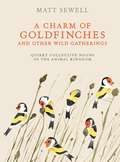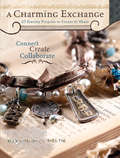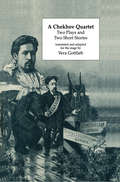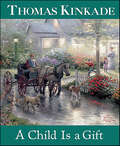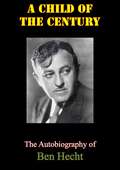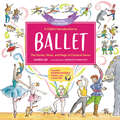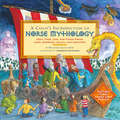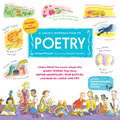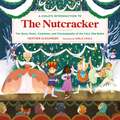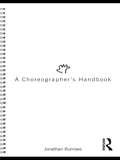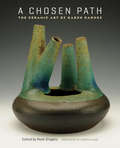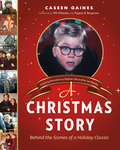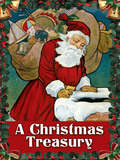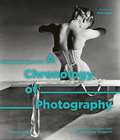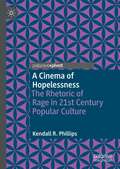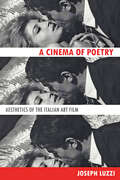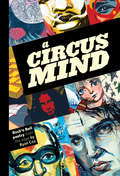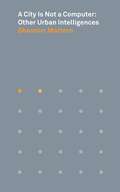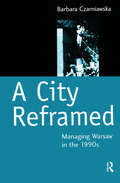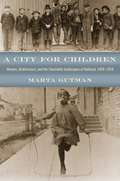- Table View
- List View
A Charm of Goldfinches and Other Wild Gatherings: Quirky Collective Nouns of the Animal Kingdom
by Matt Sewell"Most groups of wildlife can be described as a flock, herd, or shoal—but where is the fun in ending there?" — from the IntroductionWhether you're an animal lover or a grammar geek, illustrator Matt Sewell has the perfect menagerie of beasts (and beast-related terms) for your reading pleasure. Along with fifty-five gorgeous color illustrations, Sewell presents the unexpected collective nouns used to describe groups of animals on land, in the air, and in the water. Discover the secret behind a "sleuth of bears," keep your eyes open for a "watch of nightingales," and learn something new about a "school of whales." Illustrated in inimitable watercolor, this book makes a great gift for nature and art lovers everywhere.
A Charming Exchange: 25 Jewelry Projects To Create & Share
by Kelly Snelling Ruth RaeGet Inspired! As a scrapbooker, you can never have enough inspiration, especially when it comes to great layout ideas. So whether you're stumped for a page design for your photos or just want to relax with some great scrapbook eye candy, you've picked up the right book. Inside 601 Great Scrapbook Ideas you'll find hundreds of layouts to get your creative juices flowing. And because the layouts were created by over 200 scrapbook artists, there truly is something for every taste. Plus, you'll find scrapbooking tips and ideas for you to use on your own pages. Hundreds of never-before-seen layouts Pages on all your favorite subjects, including relationships, everyday life, special events, holidays, kids, pets and more Great scrapbooking tips for your own layouts With 601 Great Scrapbook Ideas great scrapbook inspiration is only a page away!
A Chateau of One's Own: Restoration Misadventures in France
by Sam JuneauSam and Bud intended to move to France and create a simple life with their children. However they bought a 17th century chateau with over thirty rooms. With modest savings, they restored the building and started a bed and breakfast against resistance from the locals. This is a glimpse into what it takes to leave everything behind to pursue a dream.
A Chateau of One's Own: Restoration Misadventures in France
by Sam JuneauSam and Bud intended to move to France and create a simple life with their children. However they bought a 17th century chateau with over thirty rooms. With modest savings, they restored the building and started a bed and breakfast against resistance from the locals. This is a glimpse into what it takes to leave everything behind to pursue a dream.
A Chekhov Quartet
by Vera GottliebFirst Published in 1996. Translated from Chekhov's short plays and adapted from his stories by Vera Gottlieb, this collection consists of four one-act plays. Short though they are, each contains a whole range of dramatic possibilities and presented together the plays form a coherent programme, offering performers and audiences an intimate theatrical experience ranging from high comedy to sombre analysis. Both student and professional actors will find an opportunity to display all their powers of invention, characterisation, timing, audience control, concentration and finesse. A Chekhov Quartet has been performed in London, Moscow and at the 1990 Chekhov Festival in Yalta
A Chicago Firehouse: Stories of Wrigleyville's Engine 78 (Voices of America)
by Mike Ditka Karen KruseFrom its humble beginnings in 1884 as a one-story frame building with one bay to house Hose Company 4 and its team of horses, Engine Company 78 has been the firefighting sentinel at the end of Waveland Avenue, sitting in the shadow of Wrigley Field. Using vintage photographs and moving stories from firefighters themselves, Karen Kruse captures the spirit and heroism of this historic Chicago landmark. Captain Robert F. Kruse served the Chicago Fire Department for 30 years, half of those at Wrigleyville's Engine 78. Growing up within the tight-knit firefighting community, Ms. Kruse records the dramatic and touching stories from her father's and his peers' experiences, and combines them in this volume exploring the unique history of Lakeview's firehouse, including a foreword by Mike Ditka and preface by Fire Commissioner James Joyce. With details about little known historic districts and a brief guide to Chicago's cemeteries and their relations to firefighters, A Chicago Firehouse: Stories of Wrigleyville's Engine 78 relays in first-hand accounts some of Chicago's most fiery tragedies, the brave men who battled them, and the diversity of the neighborhood that housed them.
A Child Is a Gift
by Thomas KinkadeFilled with Thomas Kinkade artwork and quotes from notable writers, this Little Book commemorates the miracle that comes with having a child.
A Child of the Century
by Ben HechtFirst published in 1954, in this quintessential autobiography Ben Hecht recounts his childhood, education, and career as journalist, playwright, and screenwriter, describes famous political and literary acquaintances, and examines U.S. efforts to aid Jews in Nazi Germany and, after the war, in Israel.A remarkable memoir.
A Child's Introduction to Ballet: The Stories, Music, and Magic of Classical Dance (Child's Introduction Series)
by Laura LeeThis enchanting introduction to the wonderful world of ballet has been updated to include a removable poster and access to 25 downloadable music tracks. Young dancers have fallen in love with this charming, illustrated exploration of the world's great ballets. Featuring twenty-five famous and beloved pieces such as Swan Lake, The Nutcracker, Peter and the Wolf and Fancy Free, these stories bring iconic performances to life, and inspire readers to listen and dance along to the music that has made them enduring classics. Woven into these tales is a captivating history of ballet, filled with information and profiles of the world's greatest dancers, choreographers, and composers. Young readers will also enjoy fun facts and dancing how-tos all while listening to excerpts of classical music. Also included is a removable, fold-out poster depicting the five positions of ballet.
A Child's Introduction to Norse Mythology: Odin, Thor, Loki, and Other Viking Gods, Goddesses, Giants, and Monsters (A Child's Introduction)
by Heather Alexander Meredith HamiltonPacked with action, intrigue, trickery, and love, A CHILD'S INTRODUCTION TO NORSE MYTHOLOGY acquaints kids with the original North Germanic and Scandinavian folklore behind characters like Thor and Loki, plus other gods, goddesses, giants, dwarves, and more. The newest book in the best-selling, award-winning A Child's Introduction series explores the popular and captivating world of Norse mythology. Organized into two parts, part one introduces characters like Odin, the leader of the Norse gods; Thor and his mighty hammer Mjollner; Frigg, weaver of the destinies of humans and gods; frost and fire giants; cunning dwarves like Brokk and Eitri; and many more. Part two tells the stories of the suspenseful myths themselves including The Creation of the Cosmos, The Aesir-Vanir War, Loki Bound, Thor's Hammer and many more. Full of charming and witty illustrations from Meredith Hamilton, a Norse name pronunciation guide, and a removable Norse Family Tree, A CHILD'S INTRODUCTION TO NORSE MYTHOLOGY is the perfect way for kids to learn the historic stories behind today's popular mythical characters.
A Child's Introduction to Poetry: Listen While You Learn About the Magic Words That Have Moved Mountains, Won Battles, and Made Us Laugh and Cry (Child's Introduction Series)
by Michael DriscollThis delightful, interactive journey through the history of the world's poetry now includes a removable poster and access to downloadable audio, allowing kids to listen and learn as they experience the magic of the spoken word. Poetry can be fun -- especially when we can read it, hear it, and discover its many delights. A Child's Introduction to Poetry joyously introduces kids (and parents) to the greatest poets in history -- from Homer and Shakespeare to Langston Hughes and Maya Angelou -- and provides excellent examples of their work and commentary on what makes it so special and everlasting. The book covers every style of poem, from epics and odes, to nonsense verse and haikus, and is filled with examples of each one. This multimedia package encourages children to listen, read, and learn, and opens the door to a lifetime of appreciation of a rich literary tradition. Also included is a removable, fold-out poster of "Jabberwocky" by Lewis Carroll, one of history's most iconic poems.
A Child's Introduction to the Nutcracker: The Story, Music, Costumes, and Choreography of the Fairy Tale Ballet (A Child's Introduction Series)
by Heather AlexanderBallet enthusiasts of all ages will delight in the magical story of The Nutcracker and the magnificent ballet it inspired in this enchanted book packed with colorful illustrations, fun facts, history, music, and the love of dance. Whether The Nutcracker is your first ballet experience or you&’re already a master dancer, everything you love and want to know about this special, sugar-spun, snow-dusted ballet can be found in these delightful pages. Follow The Nutcracker as it makes its way from page to stage to become the world&’s most popular holiday ballet. Learn all about the dazzling steps, spins, and jumps choreographed by Petipa, Ivanov, and Balanchine, and meet the famed composer Tchaikovsky. Special sections highlight some of the most famous dancers and companies that have brought the performance and the magic of this ballet to life.Packed with charming illustrations showcasing the beautiful costumes and lavish sets, plus removable poster for you to color, A Child&’s Introduction to the Nutcracker lets you to enjoy this magical ballet all year round!
A Choreographer's Handbook
by Jonathan BurrowsOn choreography: "Choreography is a negotiation with the patterns your body is thinking" On rules: "Try breaking the rules on a need to break the rules basis" A Choreographer’s Handbook invites the reader to investigate how and why to make a dance performance. In an inspiring and unusually empowering sequence of stories, ideas and paradoxes, internationally renowned dancer, choreographer and teacher Jonathan Burrows explains how it’s possible to navigate a course through this complex process. It is a stunning reflection on a personal practice and professional journey, and draws upon five years’ of workshop discussions, led by Burrows. Burrows’ open and honest prose gives the reader access to a range of exercises, meditations, principles and ideas on choreography that allow artists and dance-makers to find their own aesthetic process. It is a book for anyone interested in making performance, at whatever level and in whichever style.
A Choreographer's Handbook
by Jonathan BurrowsOn choreography: ‘Choreography is a negotiation with the patterns your body is thinking.’On rules: ‘Try breaking the rules on a need to break the rules basis.’The updated and revised edition of 'A Choreographer’s Handbook' invites the reader to investigate how and why to make a dance performance. In an inspiring and unusually empowering sequence of stories, questions, ideas and paradoxes, internationally renowned choreographer Jonathan Burrows explains how it’s possible to navigate a course through this complex process.It is a stunning reflection on a personal practice and professional journey, and draws upon many years of workshop discussions, led by Burrows.Burrows’ open and honest prose gives the reader access to a range of principles, exercises, meditations and ideas on choreography that allow artists and dance-makers to find their own aesthetic process.It is a book for anyone interested in making performance, at whatever level and in whichever style.
A Chosen Path: The Ceramic Art of Karen Karnes
by Mark ShapiroRenowned ceramic artist Karen Karnes has created some of the most iconic pottery of the late twentieth and early twenty-first centuries. The body of work she has produced in her more than sixty years in the studio is remarkable for its depth, personal voice, and consistent innovation. Many of her pieces defy category, invoking body and landscape, pottery and sculpture, male and female, hand and eye. Equally compelling are Karnes's experiences in some of the most significant cultural settings of her generation: from the worker-owned cooperative housing of her childhood, to Brooklyn College under modernist Serge Chermayeff, to North Carolina's avant-garde Black Mountain College, to the Gate Hill Cooperative in Stony Point, New York, which Karnes helped establish as an experiment in integrating art, life, family, and community. This book, designed to accompany an exhibit of Karnes's works organized by Peter Held, curator of ceramics for the Arizona State University Art Museum's Ceramic Research Center, offers a comprehensive look at the life and work of Karnes. Edited by highly regarded studio potter Mark Shapiro, it combines essays by leading critics and scholars with color reproductions of more than sixty of her works, providing new perspectives for understanding the achievements of this extraordinary artist.
A Christmas Story: Behind the Scenes of a Holiday Classic
by Caseen Gaines&“The definitive book about Bob Clark&’s 1983 classic holiday film. Filled with untold stories, unreleased photographs, and much more&” (Parade). This ultimate guide to everything fans want to know about A Christmas Story shares the inside scoop behind the film&’s production, release, and unlikely ascent to the top of popular culture. From Jean Shepherd&’s original radio broadcasts to Bob Clark&’s 1983 sleeper hit film and beyond, A Christmas Story has become a beloved Yuletide tradition over the last three decades. This is the untold story of the making of the film—and what happened afterwards. Ralphie Parker&’s quest for a Red Ryder air rifle didn&’t end with the movie&’s release; the tale inspired massive VHS sales, a Broadway production, and a mountain of merchandise. Complete with rare and previously unreleased photographs, now fans of the movie and film buffs alike can lean all they didn&’t know about the timeless classic. &“Entertainingly and exhaustively sheds new light on a movie that everyone loves and thinks they know inside and out. Engaging and packed with enlightening anecdotes, it&’s a perfect companion to the movie.&” —Richard Crouse, author of 100 Best Movies You&’ve Never Seen and Raising Hell: Ken Russell and the Unmaking of The Devils &“Caseen Gaines&’ comprehensive, insightful, and beautifully illustrated look at Ralphie Parker and his family will make perennial viewings of this beloved comedy an even richer and more entertaining tradition.&” —Jeremy Kinser, Queerty &“An iconic and brilliant part of Americana is brought back to life through Caseen Gaines&’ book. I couldn&’t stop smiling while reading it!&” —Noah Levy, cohost of VH1&’s The Gossip Table
A Christmas Treasury: A Christmas Treasury
by Dover Margaret Evans Price Raphael Tuck W. F. Stecher Carolyn S. Hodgman Clement Clarke Moore"The pictures were gorgeous and reminded me of an old fashioned Christmas. Many of the tales are classic tales but the illustrations used makes the stories unique again. Very enjoyable and I can see many families enjoying this one." -- Fallsburg LibraryThis lovely holiday anthology features seasonal classics from the turn of the twentieth century. Recounted in verse, the tales feature quaint color illustrations by popular children's artists of the era such as Margaret Evans Price, W. F. Stecher, Raphael Tuck, and others. Heartwarming tales include:The Night Before Christmas, Clement C. Moore's timeless poem about a visit from St. Nicholas; Father Christmas, a celebration of plum pudding, Jack Frost, snowmen, and other holiday delights;How Santa Filled the Christmas Stockings, in which a little boy discovers the pitfalls of greed; A Visit to Santa Claus, the story of Teddy's trip in his glider to Santa's workshop; Polar Bear at the Zoo, in which Teddy and his flying machine return to the North Pole with a polar bear; and Christmas ABC, charming verse couplets that spell out Yuletide treats.
A Chronology Of Photography: A Cultural Timeline From Camera Obscura To Instagram
by Paul LoweA rich and freshperspective on thehistory of photography,tracing the complex linksbetween technologicalinnovation, social change,and artistic intervention. As a medium of documentation, social commentary, commercial marketing, artistic exploration, and self-expression over the last two centuries, photography has in many ways defined the way we view ourselves and the world around us. A Chronology of Photography traces the development of the medium from early experiments with optics by artists and scientists, through the birth of photography in 1839, with the innovations of Louis Daguerre and Henry Fox Talbot, right up to the present-day explosion of digital media, with Instagram and the selfie dominating visual discourse. Providing a unique timeline framework and in-depth commentary, this volume takes a purely chronological approach to present a fresh social, political, and cultural perspective on the subject. Tracing the complex links between technological innovation, social change, and artistic intervention, A Chronology of Photography is an invaluable and comprehensive overview of photography's history including deeper explorations of key themes and moments.
A Cinema of Hopelessness: The Rhetoric of Rage in 21st Century Popular Culture (Rhetoric, Politics and Society)
by Kendall R. PhillipsThis book explores the circulation of anger and hostility in contemporary American culture with particular attention to the fantasy of refusal, a dream of rejecting all the structures of the contemporary political and economic system. Framing the question of public sentiment through the lens of rhetorical studies, this book traces the circulation of symbols that craft public feelings in contemporary popular cinema. Analyzing popular twenty-first century films as invitations to a particular way of feeling, the book delves into the way popular sentiments are circulated and intensified. The book examines dystopian films (The Purge, The Cabin in the Woods), science fiction (Snowpiercer), and superhero narratives (the Marvel Cinematic Universe and Joker). Across these varied films, an affective economy that emphasizes grief, betrayal, refusal, and an underlying rage at the seeming hopelessness of contemporary culture is uncovered. These examinations are framed in terms of ongoing political protests ranging from Occupy Wall Street, the Tea Party, Black Lives Matter, and the 6th January 2021 invasion of the US Capitol Building.
A Cinema of Poetry: Aesthetics of the Italian Art Film
by Joseph LuzziExplores the poetics and aesthetics of the Italian art film in Rossellini, Antonioni, Fellini, and other groundbreaking directors.A Cinema of Poetry brings Italian film studies into dialogue with fields outside its usual purview by showing how films can contribute to our understanding of aesthetic questions that stretch back to Homer. Joseph Luzzi considers the relation between film and literature, especially the cinematic adaptation of literary sources and, more generally, the fields of rhetoric, media studies, and modern Italian culture.The book balances theoretical inquiry with close readings of films by the masters of Italian cinema: Roberto Rossellini, Vittorio De Sica, Luchino Visconti, Michelangelo Antonioni, Federico Fellini, Pier Paolo Pasolini, Bernardo Bertolucci, and others. Luzzi's study is the first to show how Italian filmmakers address such crucial aesthetic issues as the nature of the chorus, the relation between symbol and allegory, the literary prehistory of montage, and the place of poetry in cinematic expression—what Pasolini called the "cinema of poetry." While Luzzi establishes how certain qualities of film—its link with technological processes, capacity for mass distribution, synthetic virtues (and vices) as the so-called total art—have reshaped centuries-long debates, A Cinema of Poetry also explores what is specific to the Italian art film and, more broadly, Italian cinematic history. In other words, what makes this version of the art film recognizably "Italian"?
A Circus Mind: Rock'n Roll Poetry from the Edge
by Zela Lobb Julia Minamata Andrew Wessels Ellen Sloan Jacqui Oakley Dushan Milic Samone Murphy Ryan Cox Andy Potts Elissa ParenteCircus Mind is a compilation of rock n roll inspired poems by Ryan Cox. The book weaves through the annals of rock n roll to paint an expressive history of the bands and their music. Exploring the reaches of every corner of the music world from the Rolling Stones recording of Exile on Main St in Nellcôte, France to the Willie Nelson long-haired outlaw country of the 70's and the socially conscious island rhythms of Bob Marley to the explosive grunge rock of the Seattle trio, Nirvana. Carefully crafting intricate rhymes with surreal imagery of the real life events that characterized the careers of many of the defining artists of the 20 century, Ryan delivers a unique perspective and fresh take of the rock n roll elite. Along with the vivid written imagery, the book is accompanied with a striking collection of illustrations by an international collection of six illustrators.
A City Is Not a Computer: Other Urban Intelligences (Places Books #2)
by Shannon MatternA bold reassessment of "smart cities" that reveals what is lost when we conceive of our urban spaces as computersComputational models of urbanism—smart cities that use data-driven planning and algorithmic administration—promise to deliver new urban efficiencies and conveniences. Yet these models limit our understanding of what we can know about a city. A City Is Not a Computer reveals how cities encompass myriad forms of local and indigenous intelligences and knowledge institutions, arguing that these resources are a vital supplement and corrective to increasingly prevalent algorithmic models.Shannon Mattern begins by examining the ethical and ontological implications of urban technologies and computational models, discussing how they shape and in many cases profoundly limit our engagement with cities. She looks at the methods and underlying assumptions of data-driven urbanism, and demonstrates how the "city-as-computer" metaphor, which undergirds much of today's urban policy and design, reduces place-based knowledge to information processing. Mattern then imagines how we might sustain institutions and infrastructures that constitute more diverse, open, inclusive urban forms. She shows how the public library functions as a steward of urban intelligence, and describes the scales of upkeep needed to sustain a city's many moving parts, from spinning hard drives to bridge repairs.Incorporating insights from urban studies, data science, and media and information studies, A City Is Not a Computer offers a visionary new approach to urban planning and design.
A City Reframed: Managing Warsaw in the 1990's (Cities And Regions Ser. #Vol. 4)
by Barbara CzarniawskaManagement of big cities is a relatively unresearched area, as compared to city planning and city governance. A study of Warsaw city management reveals the transformation process typically found in European countries in political and economic transition. In A City Reframed, Czarniawska conceptualises city management as an "action-net" under transformation, where three types of action are in focus: "muddling through", or coping with daily problems; "reframing", or changing the frame of interpretation of the world in order to take successful action; and "anchoring", the testing of new ideas on potentially involved parties in order to secure cooperation or minimize resistance. "Muddling through" is central to management in Warsaw, as it no doubt has always been: it is this "muddling through" that makes cities function. The specificity of the Warsaw picture is its demand for "reframing" and numerous and varied attempts have been made to achieve a "change of frame". They were sometimes successful, sometimes not, the skill of anchoring only slowly emerging from the most recent past, with the sediments of the old regimes an obvious obstacle. The study pinpoints the phenomena central to the construction of the action-net of city management, and traces its further connections (or lack of such), both temporally and spatially.
A City for Children: Women, Architecture, and the Charitable Landscapes of Oakland, 1850-1950
by Marta GutmanAmerican cities are constantly being built and rebuilt, resulting in ever-changing skylines and neighborhoods. While the dynamic urban landscapes of New York, Boston, and Chicago have been widely studied, there is much to be gleaned from west coast cities, especially in California, where the migration boom at the end of the nineteenth century permanently changed the urban fabric of these newly diverse, plural metropolises. Ina"A City for Children," Marta Gutman focuses on the use and adaptive reuse of everyday buildings in Oakland, California, to make the city a better place for children. She introduces us to the women who were determined to mitigate the burdens placed on working-class families by an indifferent industrial capitalist economy. Often without the financial means to build from scratch, women did not tend to conceive of urban land as a blank slate to be wiped clean for development. Instead, Gutman shows how, over and over, women turned private houses in Oakland into orphanages, kindergartens, settlement houses, and day care centers, and in the process built the charitable landscapeOCoa network of places that was critical for the betterment of children, families, and public life. a The industrial landscape of Oakland, riddled with the effects of social inequalities and racial prejudices, is not a neutral backdrop in GutmanOCOs story but an active player. Spanning one hundred years of history, a"A City for Childrena"provides a compelling model for building urban institutions and demonstrates that children, women, charity, and incremental construction, renovations, alterations, additions, and repurposed structures are central to the understanding of modern cities. "
A Clean, Well-Lighted Place (A Vintage Short)
by Jon KrakauerHere is Jon Krakauer’s portrait of the iconoclastic architect Christopher Alexander, whose revolutionary human-centered approach has shaken the foundations of modern architecture. Krakauer delves into Alexander’s life and career, from his theories on a timeless “pattern language” that could be used to create buildings and towns that were simultaneously more livable and more beautiful, to his belief that architecture is correctly viewed as a powerful social instrument; from his on-site drafting techniques to his design process that, like a cocoon, shapes a building from the inside out. With trademark rigor, nuance, and insight, Krakauer powerfully draws us into Alexander’s singular vision of human-centered design—one in which people reclaim control over their built environment.
